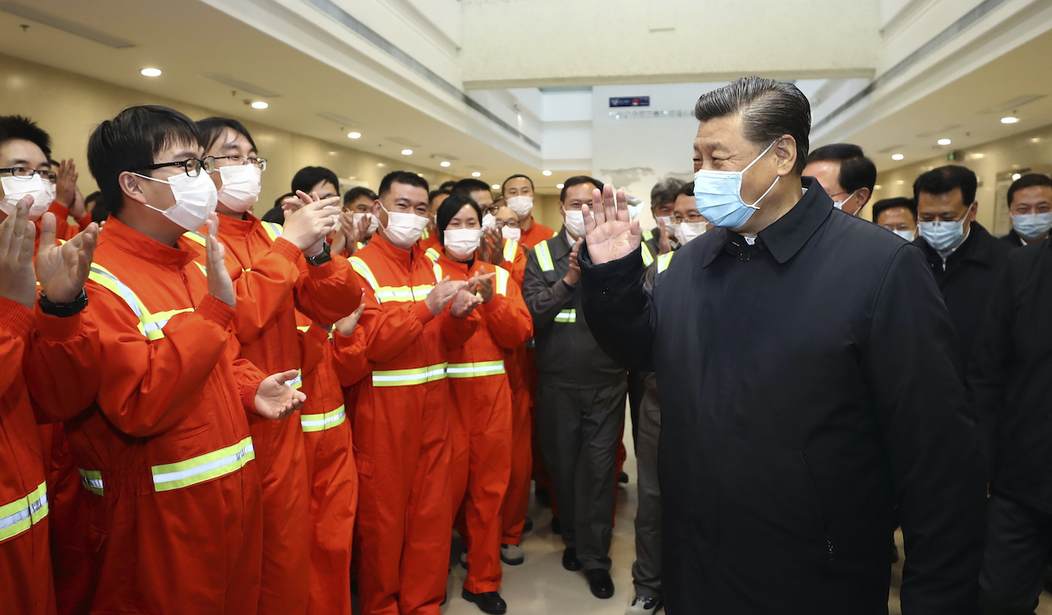It happened in Chicago, but it did not start or stop there.
A 60-something-year-old woman from the Windy City traveled halfway around the world to Wuhan, China, this past December. Her husband stayed in Illinois. She came home on Jan. 13 -- and brought something with her.
She gave it to her husband.
"The individual did not have symptoms while traveling," Dr. Jennifer Layden, chief medical officer for the Illinois Department of Public Health, explained during a Jan. 24 press briefing sponsored by the federal Centers for Disease Control and Prevention.
But that, of course, was not the end of the story.
"A few days after arriving home, the patient began to feel unwell," Dr. Allison Arwady, commissioner of the Chicago Department of Health, said in that briefing.
The doctors tried not to be alarmist as they discussed the problem this virus from Wuhan presented.
"Again, she was not symptomatic when flying, and based on what we know now about this virus, our concern for transmission before symptoms developed is low. So that is reassuring," said Arwady.
"Since returning from China, the patient has had limited movement outside her home," she continued.
"This is all very reassuring in terms of infection risk to the general public, which remains low nationally and locally here in Chicago," the doctor said.
This Chicago woman, who had been in Wuhan, was one of the first known COVID-19 carriers to enter the United States, according to CDC reports. But she was not the first diagnosed with the virus.
On Jan. 15, a man in his 30s arrived back in Snohomish County, Washington. He, too, had been in Wuhan.
On Jan. 21, three days before it would confirm the Chicago case, the CDC announced that this Washington man was the first U.S. resident to test positive for COVID-19.
Recommended
"I am also thankful that the man who tested positive for this virus acted so quickly to seek treatment," said Dr. John Wiesman, the Washington state Secretary of Health. "Because of that we were able to isolate him from the public. His actions gave us a head start. All of this work means we believe the risk to the public is low."
On Jan. 26, the CDC announced three more cases -- including one in Arizona and two in California.
These three had one thing in common with the first two.
"All of these infections were in people with recent travel to Wuhan, China, the epicenter of the outbreak," said Dr. Nancy Messonnier, director of the CDC's National Center for Immunization and Respiratory Diseases.
Then another person in Chicago -- who had not been to Wuhan -- tested positive. Who was he?
"The first Illinois case, a woman in her 60s, who returned from Wuhan, China, January 13th, is in the hospital in stable condition, and continues to do well," Layden explained in a Jan. 30 CDC briefing. "Public health officials have been actively and closely monitoring individuals who had contact with her, including her husband, who had close contact, for symptoms."
"We have now received lab confirmation from the CDC that he indeed has novel coronavirus," she said.
This husband was "the first person-to-person transmission" in the United States.
On Jan. 31, the CDC announced the seventh case. "The patient recently returned from Wuhan, China," said the CDC.
That same day, President Donald Trump announced he was suspending entry to the United States for foreign nationals who had been in China within the past 14 days.
In the two days following Trump's announcement, the CDC detected four more cases. Three were in persons who had recently returned from Wuhan. The fourth, the CDC said, was a woman who lived in the same household as one of the previously detected patients who had been in Wuhan.
In its "Morbidity and Mortality Weekly Report" published on Feb. 7, the CDC summarized how COVID-19 came to America. "Nine of the first 11 U.S. 2019-nCoV patients were exposed in Wuhan, China," it said.
The other two were the spouse and a household member of U.S. residents who picked up the virus in Wuhan.
Secretary of State Mike Pompeo has stated the truth. "This virus began in Wuhan, China," he said March 24 on "Washington Watch with Tony Perkins."
"Unfortunately, the Chinese Communist Party covered this up and delayed its response in a way that has truly put thousands of lives at risk," Pompeo said.
Since the first few Americans returned from Wuhan unwittingly carrying this virus, the situation has dramatically escalated. As of Tuesday, the CDC estimated there were 374,329 COVID-19 cases in the United States and 12,064 COVID-19 deaths.
"So," Pompeo told Perkins on March 24, "Every day that the Chinese Communist Party sat on this information and didn't do the right thing, and instead punished doctors who were attempting to alert the world about what was taking place there in Wuhan, increased the number of people who would be exposed, and thereby put all of us all around the world -- and the Chinese people as well -- put them at unnecessary risk, too."
"There will come a day when we will go evaluate how the entire world responded," Pompeo said at a March 17 briefing.
When this pandemic has passed, every aspect of U.S. relations with China should be reevaluated and recalculated to do just one thing: put the American people first.
Terence P. Jeffrey is the editor in chief of CNSNews.com. To find out more about him, visit the Creators Syndicate webpage at www.creators.com.

























Join the conversation as a VIP Member